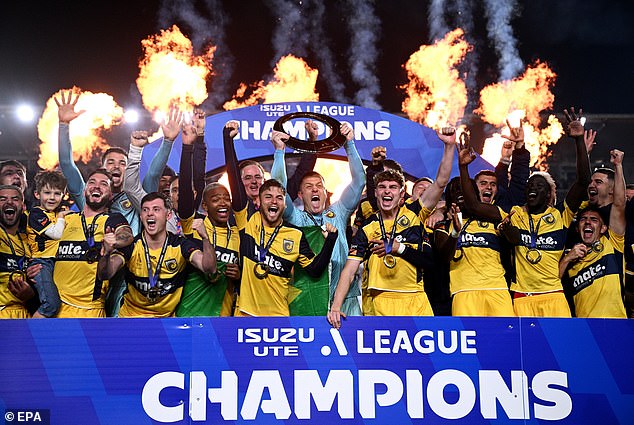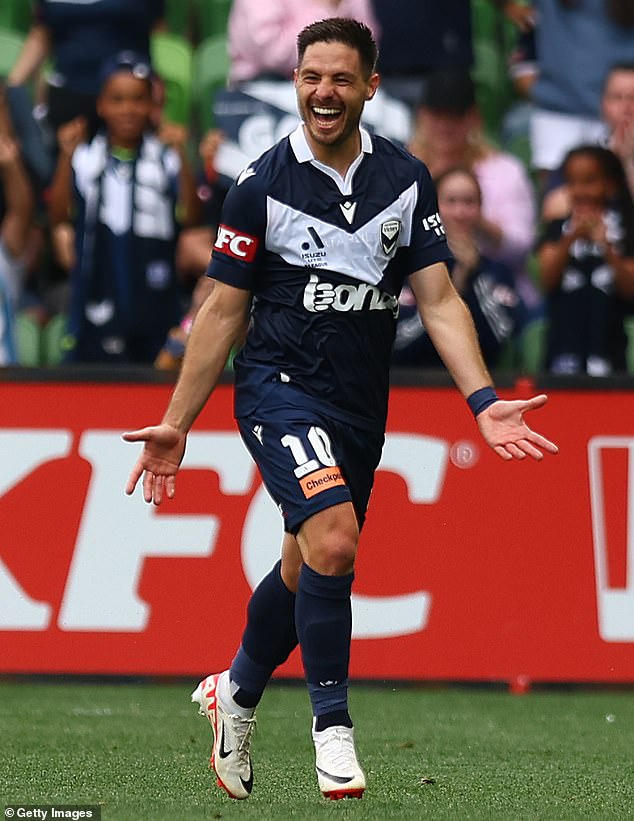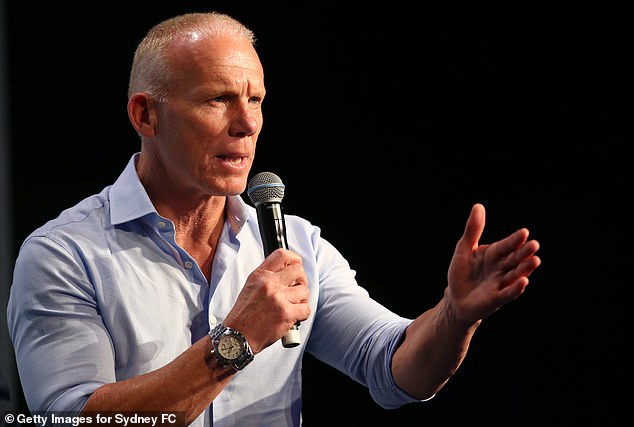- A-League clubs have seen their central distribution pool cut
- All A-League men’s clubs must spend at least $2.25 million on players
- It comes after an earlier $140 million funding injection was squandered.
Socceroos great Robbie Slater has criticised Australian Professional Leagues (APL) football bosses for “realising the A-League’s worst fears” as the sport becomes embroiled in a fresh crisis.
This comes after the APL informed A-League clubs this week that their share of the central distribution fund has been reduced to $530,000 ahead of the start of the 2024-25 season in October.
Many clubs had expected the figure to be closer to $1 million and, in a telling comparison, in the recently concluded season the amount allocated was $2 million per A-League team.
“Why should clubs, who have had nothing to do with poor governance and bad spending habits, bear the consequences?” Slater asked.
‘They have made the A-League’s worst fears come true.’
The bombshell announcement following the APL board meeting on Wednesday has left many clubs facing a bleak future.
The A-League men’s salary floor (the minimum amount clubs must spend) is $2.25 million and the salary cap is $2.6 million.
While richer teams like Melbourne City will be able to plug the financial gaps, smaller clubs like the Newcastle Jets will have to scramble to cover the significant shortfall before a ball has even been kicked.
Socceroos great Robbie Slater has criticised Australian Professional League (APL) football bosses for “realising the A-League’s worst fears”

This comes after A-League clubs were informed this week that their share of the central distribution fund has been reduced to $530,000, down from $2 million this season (pictured, Central Coast Mariners after winning the Grand Final in May).

Big-name signings such as Melbourne Victory’s Bruno Fornaroli at the height of his career look to be a thing of the past in the troubled A-League.
It is also anticipated that some A-League clubs will have to cut back on their already stretched on- and off-field departments to avoid making substantial losses.
The signings of top players from Europe and Asia will also go down in the history books of Australian football, at least for the next few years.
APL chairman Stephen Conroy said the reduction in central distribution was not a surprise to A-League clubs, even if they are expected to experience significant pain over the next financial year.
“While clubs are obviously hurting by the size of this reduction, no one gave any indication that they had that level of problem at the meeting,” Conroy said.
“Obviously they weren’t dancing, but nobody said ‘that’s it, we’re closing the doors.'”
APL was forced to make significant cuts to its head office in January as a result of overspending at its digital division KEEPUP and a $140 million outlay from private equity firm Silver Lake.
What complicates matters further is the APL’s unwillingness to allow an independent audit of its finances.
Other initiatives, notably the shoring up of Perth Glory, the delay in securing expansion fees for a Canberra men’s A-League team and the collapse of broadcast production partner Global Advance have hampered the A-Leagues’ ability to thrive since gaining independence from Football Australia in 2020.
Furthermore, the TV deal with Network Ten, which retains rights to the competition until the end of the 2025-26 season with streaming service Paramount, is riddled with targets that the A-Leagues must hit to secure funding from their broadcast partner.
“The league moved too fast and spent too much money,” Conroy said. “The ability to dip into a capital reserve to fund losses simply isn’t there.”
A-League commissioner Nick Garcia added that the APL was hopeful of finalising a deal with a new production company and that a Canberra ALM team would enter the competition for the 2025/26 season.

